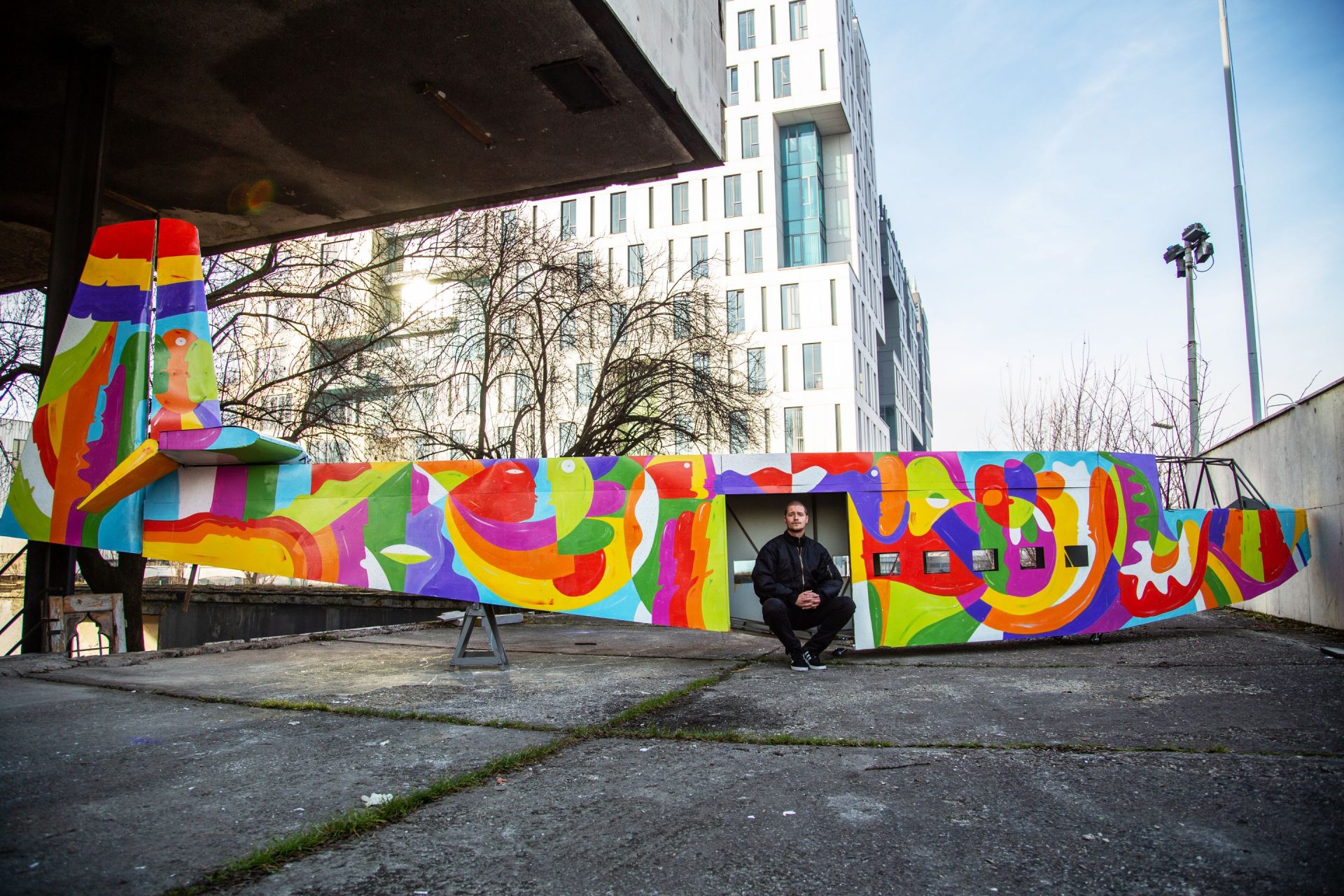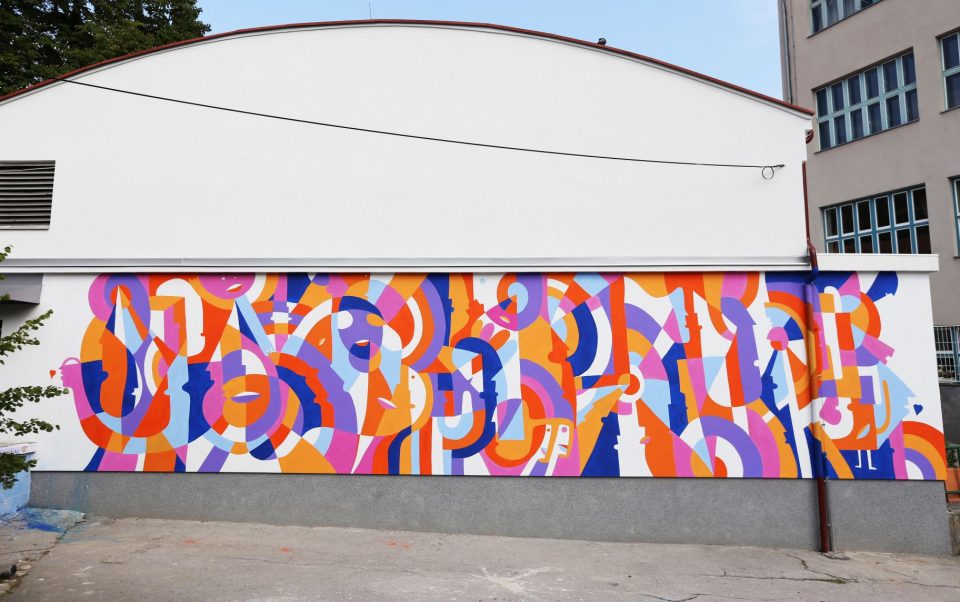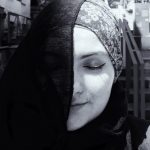
A mixed media artist with a special talent for illustration and digital art, his works are exhibited in art galleries, institutions and public spaces around the world, from Sarajevo and Mostar, to Berlin, New York, Miami, Los Angeles and Taiwan. His works Madness Continuous and Depth were selected by the Platform for Contemporary Art and presented in New York’s famous Times Square.
Young artist Rikardo Druškić was born in 1990 in Zagreb and has spent most of his life in Sarajevo. The story of this ‘child of the universe’, as he calls himself – it is an articulation of how he feels inwardly, as well as his internal thirst for knowledge – starts from his high school education there.
“I was a victim of the school system, or the school system was a victim of me. I’m not sure what the exact wording is,” he says, adding that they certainly did not belong together. Precisely because of this conflict with the school system, he flourished in his more mature years. That system, he says, is not only outdated and too formal, but also boring and based heavily on authority.
“It is everything my inner being rejects and demonizes. For me, school, except for socializing, was hell.”
With no tolerance for authority, “Cold War school Rikardo” was born, the epilogue of which is the artistic talent that the whole world now sees.
“It’s a way of escaping the repression of my inner self. That was the easier way out for both warring parties,” says Druškić.
“My inner truth is God, and art is the outer form through which I present my truths,” says Druškić. He adds that these truths may indeed be subjective and personal, but they are often the ones that other people can identify with, so they become common truths.

Over the past years, he has managed to establish himself as one of the most sought-after young artists from Bosnia and Herzegovina (BiH).
Art as a medium of communication
Druškić says that art is often elitist and as such scares the common man. According to him, it should be a medium for transmitting a message. But sometimes there can be interference on the line, which needs to be addressed as soon as possible.
“It cannot be solved by thinking that the audience is the problem,” he says.
Druškić says that, from the beginning, he tried to remain modest, and in that way present his art as ordinary, fragile and flawed, but also identifiable and accessible. The many people who identify with his art are the ones who, along with his family, have been his main support from the very first steps he made into the artistic world.
Along with that modesty and support have come recognition for his work. Although his art has toured three continents, Druškić points out that he is most pleased with the recognition of his fellow citizens, because, as he says, it surpasses both his art and him as an artist.
Druškić says that what he does is not recognized in academic circles. It is even sometimes ridiculed, and he is aware that art is not appreciated as it should be. Lacking a formal academic education, this talented artist has nevertheless shown how, in many parts of the world, what he does is valued.
“My success, which comprises multiple domestic and international awards, as well as exhibitions, commissioned murals, and artistic residences, is actually a sign that, no matter how gray our lives may seem, with hard work, dedication, intuition and heart, a man from BiH can rise above that grayness and shine,” he says.
Shining so proudly and strongly restores collective hope to our hearts, at least for a moment. Druškić also considers one of his greatest successes to be his personal transformation, which is especially appreciated by those who love him the most – his parents.
“It Is Better Expressed With Colors than Words”
So Michelangelo used to say. Druškić’s primary medium is painting but he uses a combination of artistic techniques in his work, including drawing and digital processing. On canvas, he uses acrylic and mixed media techniques, and he similarly combines traditional and digital techniques in his illustrations. When it comes to painting murals, he chooses acrylics.
“Technique is important, but the message of the artist is what sets him apart from others and makes him unique,” he points out.

Art Revolution competition in Taipei in 2014 marked a serious beginning for him. At just 24, he was lost, full of emotions, and unable to channel them. During that period, he did not make much art, because life was taking him in other directions. However, the award became the basis for a later transformation, making Rikardo what he is today. Ever since then, he says, he started thinking more seriously about art and himself as an artist.
A number of exhibitions followed, one of which was a solo one in Vienna. He also painted murals that adorned cities in BiH, and exhibited his works in the Sarajevo City Hall. In it, he presented the Awakening of Consciousness series, which he describes as his true “artistic self”.
“The exhibition in the City Hall was a metaphysical experience for me,” he recalls.
The series, he says, was created quickly, intuitively and spontaneously, and the result was the articulation of internal, abstract, long-term, chaotic emotions.
“That exhibition pushed me toward the path of life and since then it has become easier for me. Because exhibiting work in one of the symbols of the city where I grew up is a story unto itself. A full City Hall of people who came to see my work while there was a strong storm outside. It gave my life a deeper meaning,” says Druškić.
Shortly afterwards, he contacted the Balkan Trafik Festival in Brussels, which promotes the culture of Southeast Europe, and this led to the painting of the mural in the center of Brussels and the exhibition in Bozar.
“Those ten days were the best days of my life so far,” he says, adding that it is an incredible feeling to proudly present his country in such a beautiful and positive light.
His message went out into the world, and the mural was opened by Mayor of Brussels, Phillip Close, and Federica Mogherini, then Acting High Representative for the European Union (EU).
Rising to the Stars
Druškić remembers that the earlier years of his life were like a fall, or a limbo, and that life for him had no deeper meaning. There was a darkness there for a long time, but now his feet are firmly on the ground and treading the path that he knows belongs to him.
“Inner meaning is what gives us the strength to move on after all the tragedies,” he says.
A lack of metaphysical foundations, he believes, is what a large part of the postmodernist narrative is reflected in. “This is capitalism we live in – a system that has taught us that the material is the most important aspect of life. It is logical then that our youth is confused,” adds Rikardo Druškić.
He believes that in all young people there is a desire to change the world. The problem arises when it starts from the wrong premise, especially the idea that we need to change others. That premise is both wrong and impossible. To some extent, according to Druškić, a man can only control his own life.
“Working on myself is the essence of everything I do. It is the key to achieving the change of collective consciousness that is needed. However, it should be said that, if we look at life objectively, we live in by far the best moment in the history of mankind,” he explains.
Although many projects that Rikardo was supposed to work on have recently been postponed and even suspended due to the Covid-19 pandemic, he has not stopped. He is especially happy that, as he puts it, the pandemic has had a positive impact on art.

pandemic. (photo: private archive)
“I have never seen more artistic collaborations and open calls for art. A special feeling can be felt all around art right now, regardless of the topic at hand, and in time that will connect more and more people through shared, universal values,” he states.
“I hope that spirituality and metaphysics will once again enter contemporary, postmodern art. Because, while postmodern art changes and ‘saves’ others, I believe that it should first of all save itself. Without metaphysics, it lacks essence. It is impoverished,” concludes Druškić.






